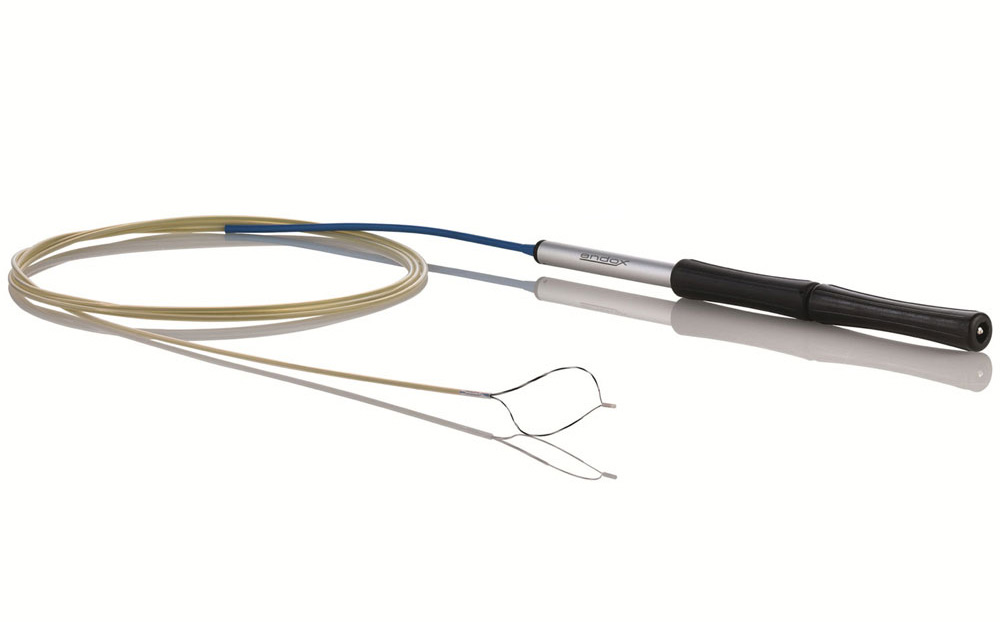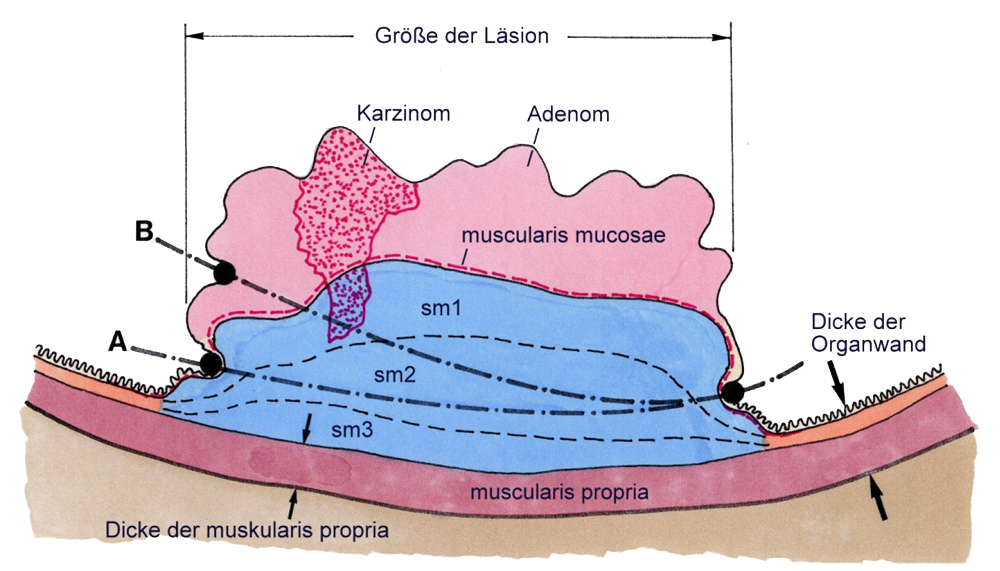Flat Adenoma Resection Instrument (Typ C)
for
en-bloc resektion large lesions near Muskolaris propria

The Flat Adenoma Resection Instrument (Typ C) was developed to treat especially large polyp-like and flat lesions > 2 cm bis ca. 4 cm en bloc near the muscularis propria and with low mechanical and thermal artifacts in a short time (pure resection time without marking, re-injection and cutting, < 1 min.) to be able to resect.
An important reason for the development of these instruments was and is the requirements of oncology. Resection of pathological tissue areas of the mucosa or submucosa of the gastrointestinal tract in sano, as well as the requirements of pathology en-bloc and without mechanical and thermal artifacts in the resectate.
A new procedure called Endoscopic Submucosa Resection (ESR) and new instruments (Flat Adenoma Resection Instrument) are now available. the clinical applications after extensive in vitro testings was successful for CE-marking.
The most important feature of these instruments is the effector, which is available as a symmetrically opening and closing (Fig. 2b) HF surgical resection loop.
More details you can find out on the product sheet (PDF-Download)
At the specialized publishing house - © Georg Thieme Verlag KG Stuttgart · New York - is an article in the magazine "Endoscopy ( 2016; 48(S 01): E218-E219 )" appeared.
To the publication (external Link!)

... more info
The aim of the development of new methods and instruments for the endoscopic removal of particularly large polyps (>2 cm) and flat lesions of the mucosa of the gastrointestinal tract is to meet the relevant requirements on the part of oncology, i.e. the removal of pathological tissue in sano, and pathology, i.e. the removal of pathological tissue as en-bloc as possible and below sm1, or close to the muscularis propria, optimally according to incision A in Fig. 1. With the currently available methods of endoscopic polypectomy (EPE) and mucosal resection (EMR), both of which are carried out with conventional polypectomy or HF surgical resection snares, the above-mentioned requirements of oncology and pathology cannot be reliably met.

One of the first result of a ESR with Flat Adenoma Resection Instrument (Resektor: OA Dr. med. S. Gölder, III. Med. Klinik des Zentralklinikums Augsburg/Germany, CA Prof. Dr. H. Messmann) confirms the fulfillment of the above requirements of oncology and pathology.

Fig. 4: resectate after resection with a Flat Adenoma Resection Instrument (Typ C)(S. Gölder, H. Messmann, Augsburg{Germany).
